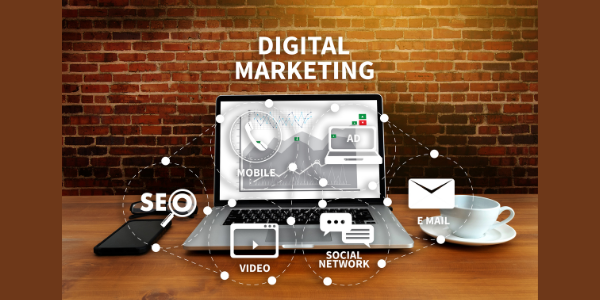At its Worldwide Developers Conference in June, Apple announced new privacy features for the iOS 15, which became available to the public in September 2021. These privacy features have already had a tremendous impact on the use and effectiveness of email marketing, and they will continue to do so for the foreseeable future.
Apple’s iOS mobile operating system currently has a 26.75% global market share, and a 57.08% U.S. market share. Anyone who has an iPhone of 6S (released in 2015) or newer is eligible for the free update. For users who update, you won’t be able to track if and when they open one of your emails.
If you’ve been relying on open rates as a key KPI for your marketing campaigns, you will need to rethink and adjust your email marketing strategy. Otherwise, the new updates will have a confusing, if not negative, impact on your bottom line.
Considering there are now over 1 billion iPhones in use, adapting your strategy to accommodate these updates is critical.
A Breakdown of iOS 15’s Email Privacy Protection
While the update provides numerous privacy protection protocols, the two that have the greatest impact on email marketing are:
Mail Privacy Protection: Included for free for all users, Apple Mail now masks their IP addresses and blocks third parties from tracking their email open rates using a simple opt-in feature. It also blocks the use of invisible pixels (also known as spy pixels, tracking pixels, and web beacons), which many businesses have been using to collect user data.
This protocol means that if you’ve been tracking email open rates, you can no longer rely on this data to measure the effectiveness of your emails—at least by the users of the new Apple technology.
Another effect is that you can no longer geo-target your emails based on IP addresses for these users. Also, any invisible pixels you’ve been using will be blocked by iOS 15.
Hide My Email: For those with paid subscriptions to iCloud+, they have the option to create random email addresses that forward to their primary email address. This allows the user to sign up for online newsletters and the like without sharing their actual email addresses.
Regarding this feature, Apple stated, “…Hide My Email also enables users to create and delete as many addresses as needed at any time, helping give users control of who is able to contact them.”
In other words, a user can create an email address they provide exclusively to your business and, should they be unsatisfied with the emails you’re sending them, delete that email address. Once it’s deleted, the email address they gave you becomes “dead” and they will no longer receive any of your emails.
The Effect of iOS 15 On Email Open Rate Data
Like most businesses, you have probably been tracking the open rate of your email marketing campaigns and using the percentages to help evaluate your strategy. But with Apple’s latest update, any results you get from this type of testing will be skewed.
The iPhone users who update to iOS 15 and opt-in to the privacy features can no longer be included in tabulated data. Since indicators are blocked, there is no way of knowing if they opened your emails. You will also no longer know how many times they opened them or where they are located.
It’s hard to know what percentage of iPhone users will move forward with the update but since it’s free and beneficial for its users, it’s safe to assume the majority will install the update and opt-in to mail privacy protection.
Measuring Beyond iOS 15 Users
You can still continue to measure email open rates for users of other devices outside of iPhones. Although you may initially see your numbers drop as iPhone users update to iOS 15, you can still measure across other channels.
Users of Android phones are one such sizable market, as they make up 72.2% of the global market, and 40.54% of the U.S. All laptops and tablets are still fair game as well, including iMacs and iPads. While Apple may eventually extend these privacy features to its other devices, as of now, they’re only available for iPhones.
In addition, there is currently no news from tech giants like Microsoft or Google to adopt a similar privacy policy.
In the HubSpot article “How Apple’s iOS 15 Could Impact Email Marketers,” author Pamela Bump explains it this way: “Although Apple Mail and Apple mobile devices make up over 35% of the email provider market share globally, Google, Outlook, and other email providers haven’t announced similar privacy moves, which means their open and IP data could still provide solid tracking information for email marketers.”
Other Ways for Advisors to Measure Email Marketing Efforts
There are other ways to measure the effectiveness of your email marketing efforts beyond open rates. Below are four options:
- Click-Through Rates: Click-through rates are perhaps the most effective measure of the effectiveness of an email marketing campaign. If users open your emails but fail to click on key actions (hyperlinks, buttons, etc.), then the campaign can’t be counted as successful anyway. If you meet a certain threshold of click-throughs, however, then you’ve completed a successful campaign, regardless of overall open rates. Google concurs, stating, “The click-through rate will help you (with) measuring the success of your emailing campaigns, and should give you more useful information than the open rate only.”
You can track click-through rates using just about any E-Mail Service Provider (ESP) including Gmail, Google Workspace, Office 365, and MailChimp.
- Click Maps: Some email providers allow you to see which sections in your emails were clicked on the most and least, which can help you determine which content of an email was most effective.
- Website Traffic: You can also measure overall traffic to your site from a particular campaign. You can use software from companies like HubSpot or Google Analytics to track where your traffic comes from, including emails. A strong percentage of traffic from a certain campaign indicates the emails are reaching your intended audience.
- Unsubscribe Rates: A spike in email unsubscribes can indicate that your campaigns need to be adjusted while a low unsubscribe rate demonstrates an effective marketing campaign.
Alternatives to Email Marketing for Financial Advisors
Firms can also shift some of their efforts from email marketing to other marketing efforts. Two of the best marketing tools are social media and SEO.
Social Media For Advisors
As outlined in the Hootsuite article, “Social Media in Financial Services: 5 Essential Tips and Benefits” social media can be used to:
- Strengthen relationships
- Build trust
- Highlight brand purpose
- Gain customer insights
- Reduce efforts
- Reduce costs
Navigating social media can be tricky but, according to an article published on Financial Advisor, it’s a must. Studies found that:
- Nearly 50% of investors reported that social media impacts whom they hire as a financial professional
- 33% of the investors reported seeking financial advice online
- 20% of investors stated advisors’ social media presences were the sole deciding factor when evaluating which to choose
- 23% of Gen Z said they wouldn’t consider talking to a financial professional without a social media presence
Having a social media presence across multiple platforms not only helps potential investors find you, but it also aids in establishing trust, a key component of any business transaction.
Custom Website Content For Organic Traffic and SEO
In addition to social media, advisors and their firms can focus on Search Engine Optimization (SEO). Targeted custom content can improve your ranking in search engines like Google and drive traffic organically over time. In other words, the right content on your website/blog can bring in site visitors over and over again with no additional cost or labor needed in regard to a particular article or post.
As noted in the article “SEO Strategies Financial Advisors Can Use to Attract the Right Clients Through Google Search,”most financial advisors don’t use SEO strategies at all—which means advisors who are producing and publishing more content regularly can gain greater market share.
SEO can also help to bring in higher-quality leads. Instead of chasing after people who are never going to use your services, prospects who find you through organic SEO search come to your site because they have deliberately sought out what your firm has to offer.
Marketing With TIFIN Clout to Diminish the Effect of the iOS 15 Update
While the iOS 15 update affects the measurement of email open rates, it has no bearing on the overall effectiveness of an email campaign—only the measurement of them. It also does not impact SEO or social media efforts.
TIFIN Clout can help you with your marketing efforts by creating custom content that is built on your unique value proposition, client investment, and client segments. We built it to help smaller firms save time and effort with targeted content that improves conversion rates or helps target specific search keywords.
We provide regular publishing and campaign management, as well as real-time machine learning and measurements. Our platform integrates with some of the top social media platforms and CRMs, including LinkedIn, Twitter, Facebook, Salesforce, and more.
Our robust platform will allow advisors to quickly ramp up the quantity and quality of their social media activity. This can allow them to reach new audiences, deploy new campaign tactics, and shift their marketing mix away from an over-reliance on emails or newsletters.
Ready to see what TIFIN Clout can do for your firm? Contact us today to schedule a demo – Book A Demo.



